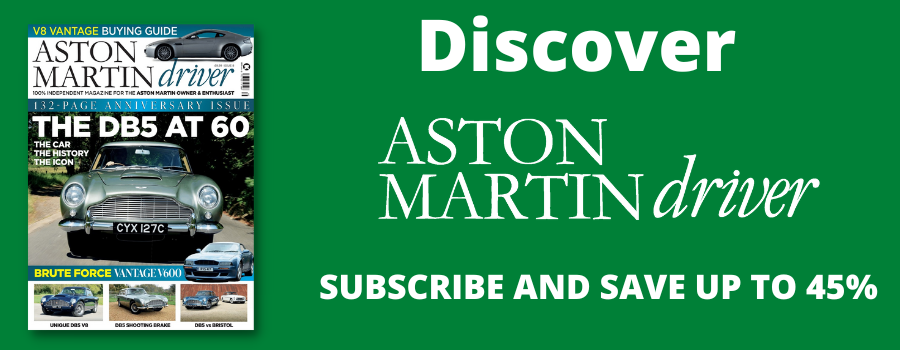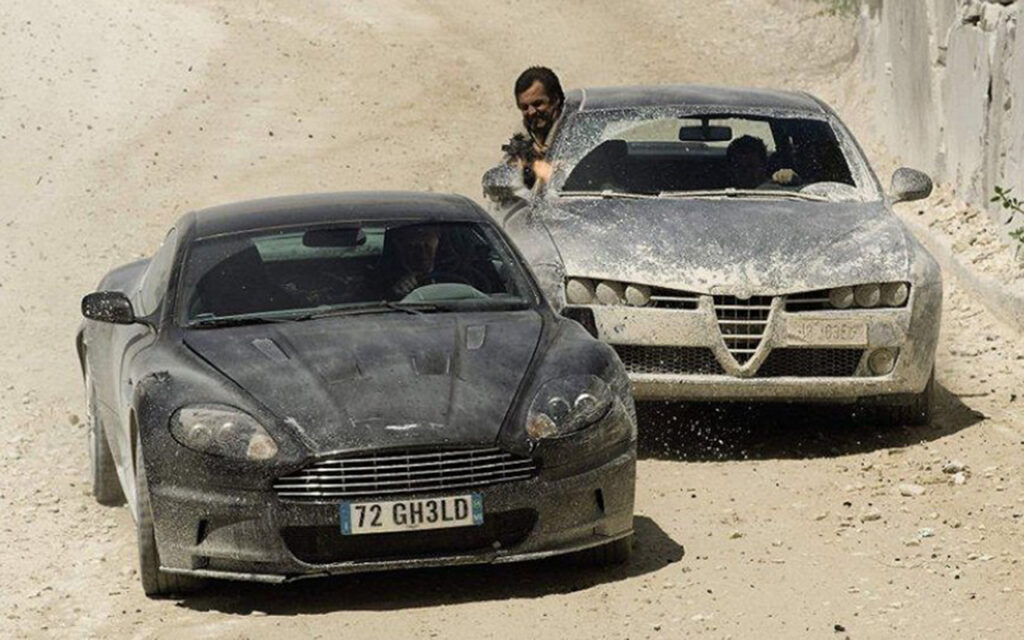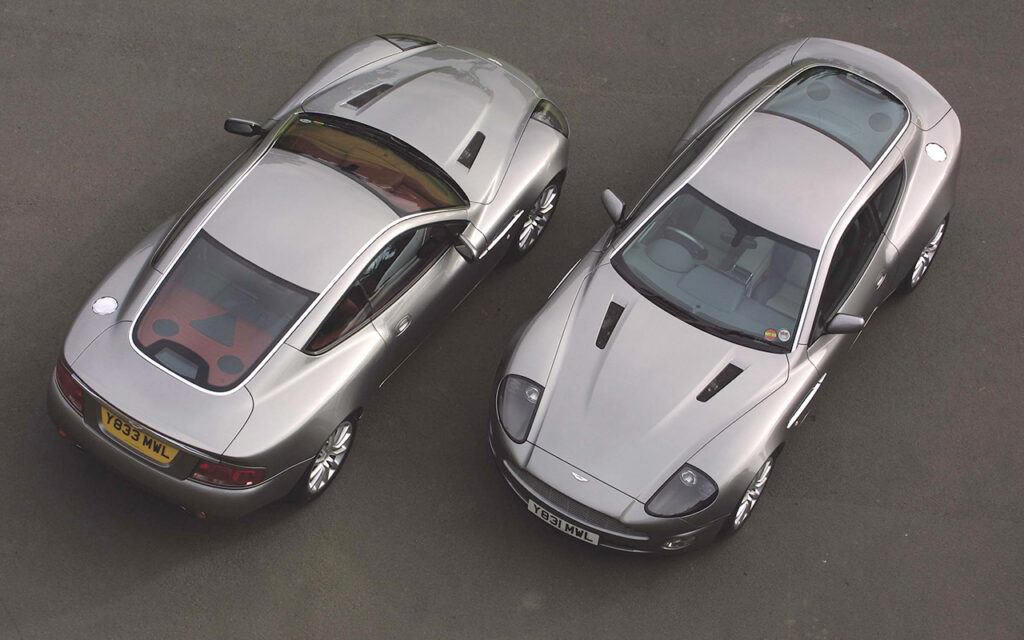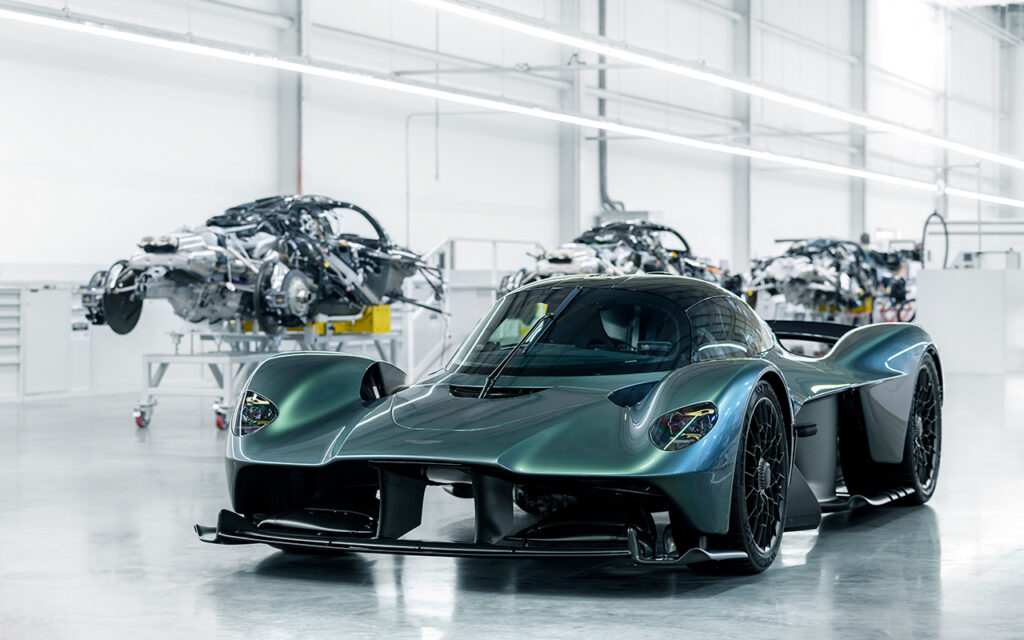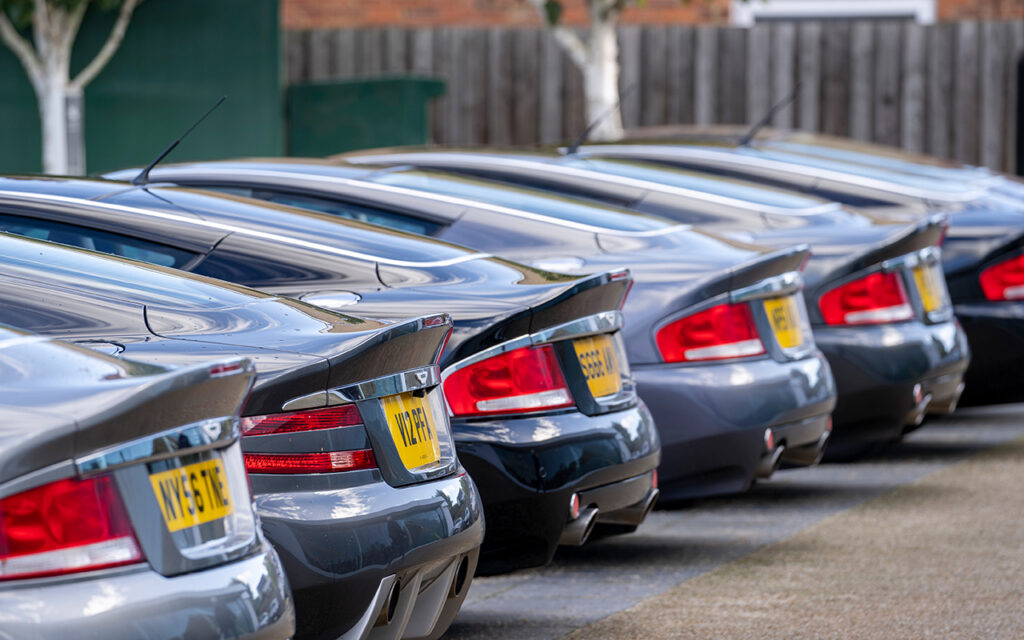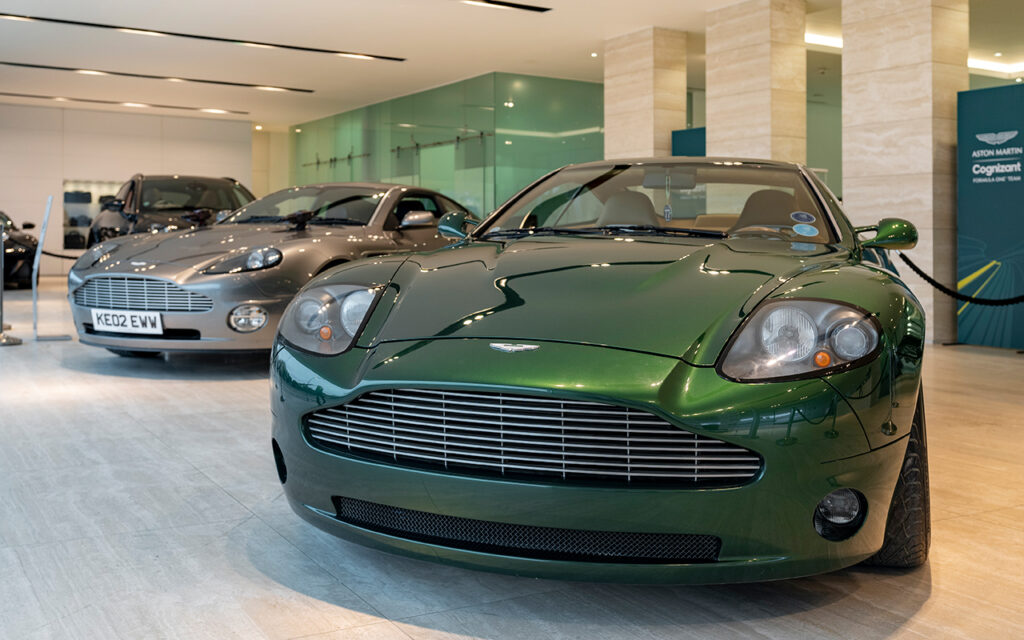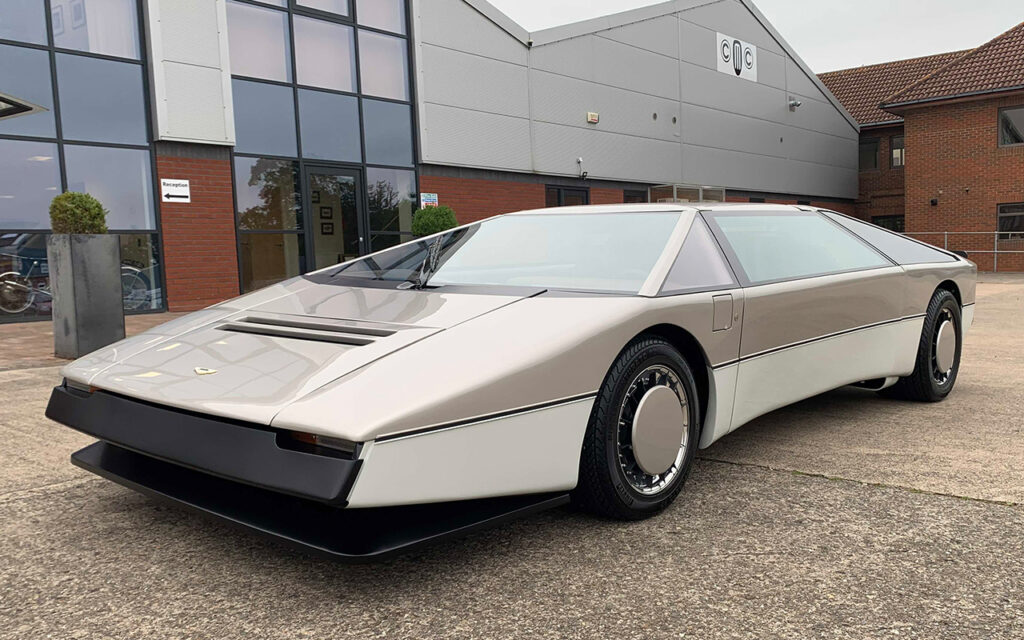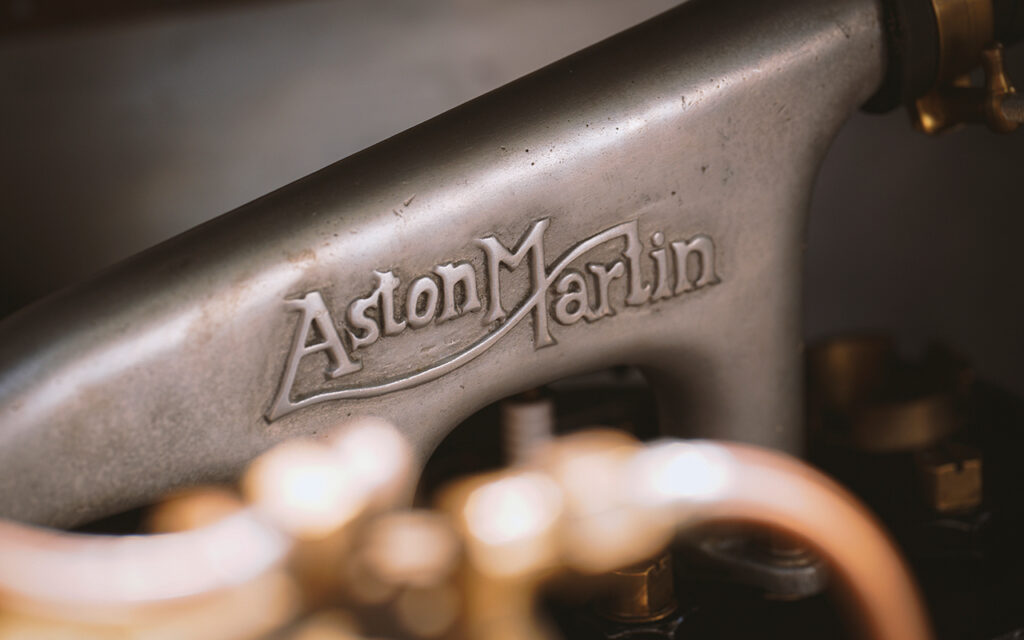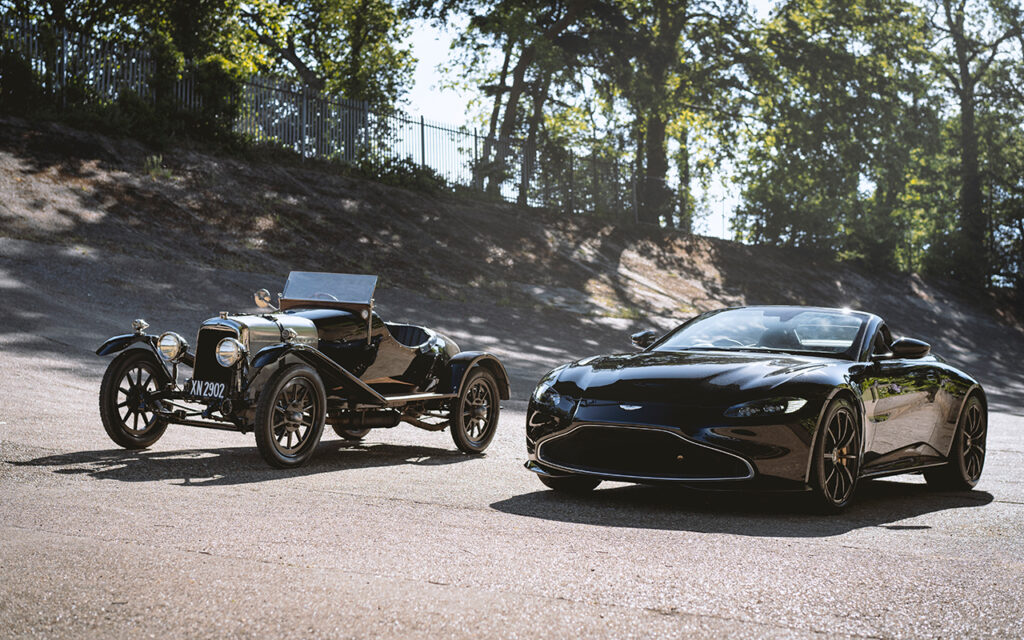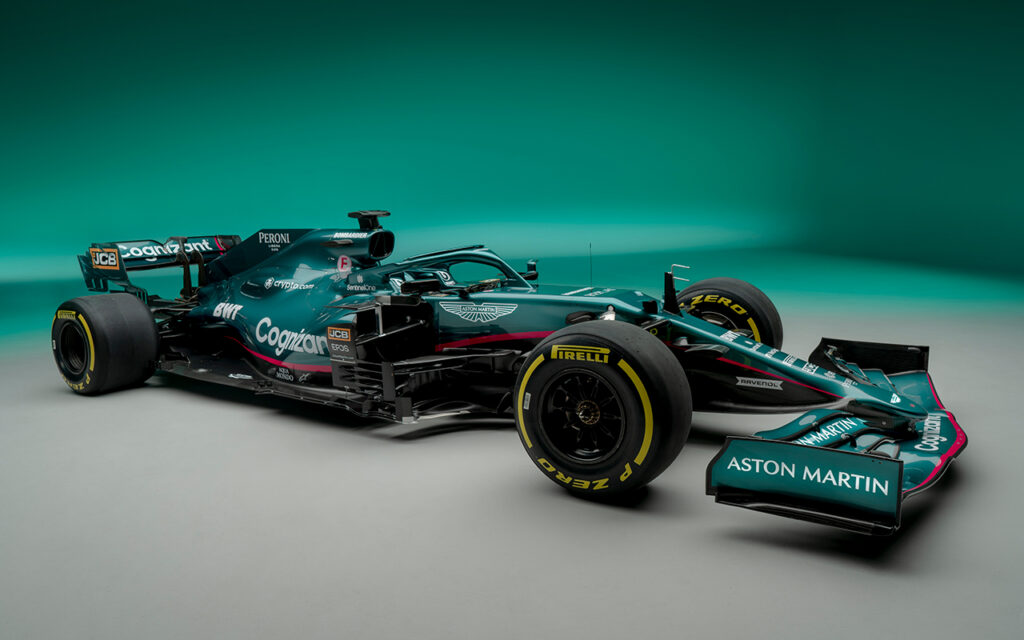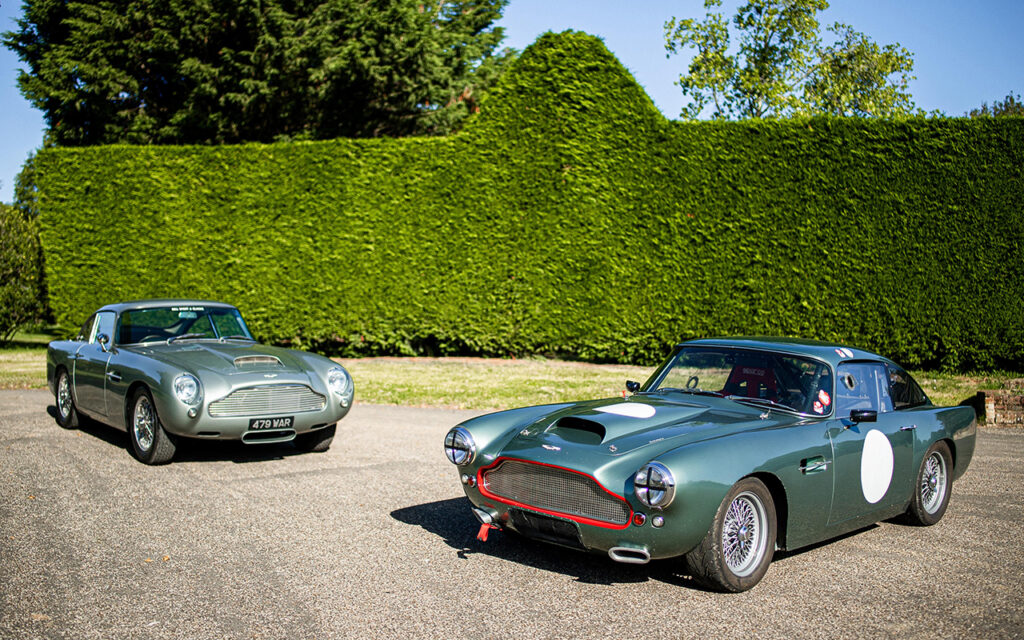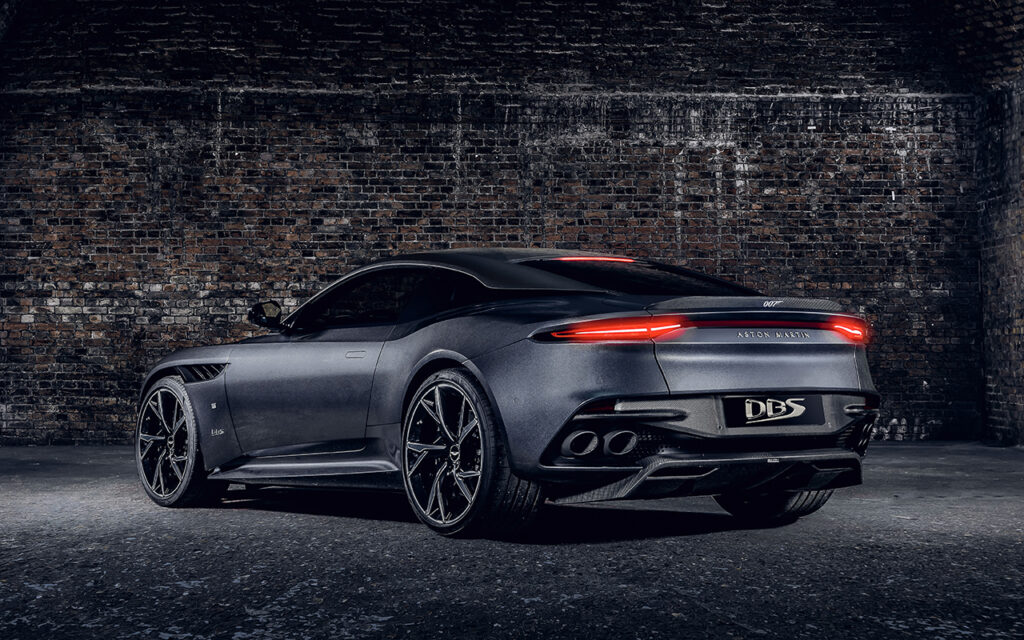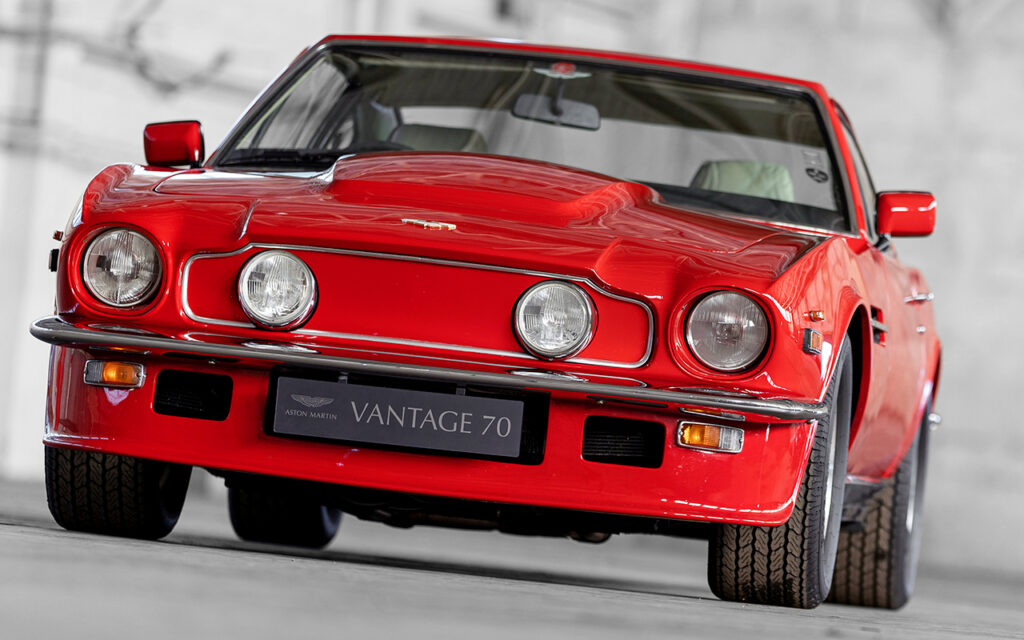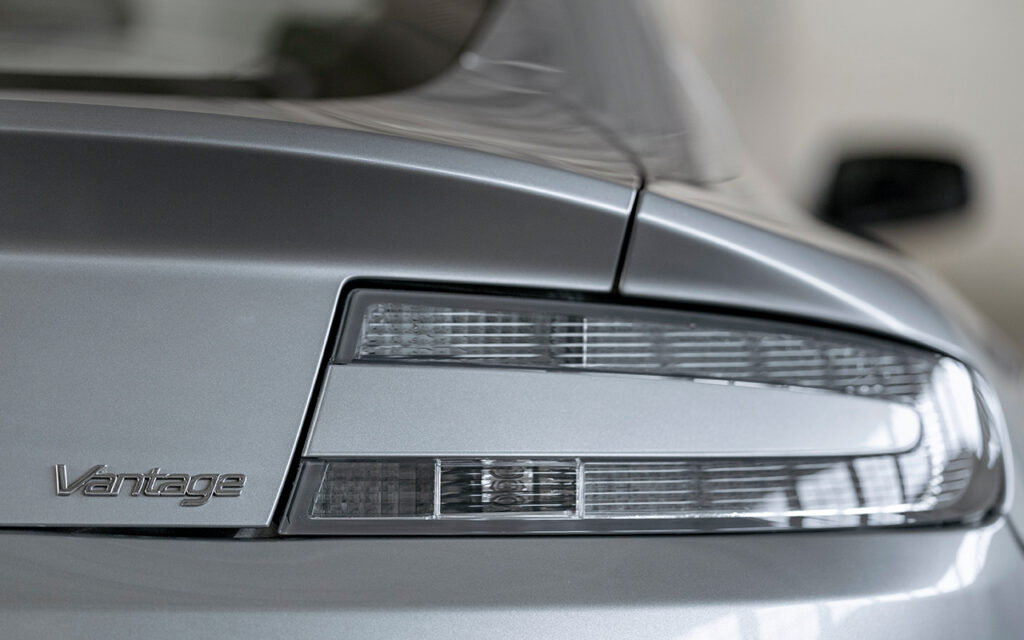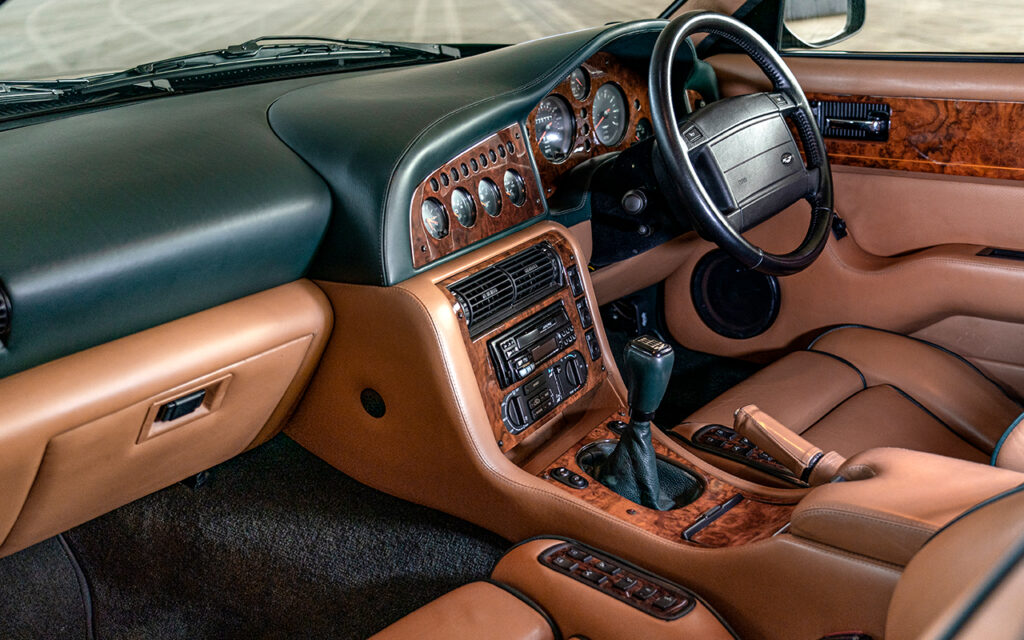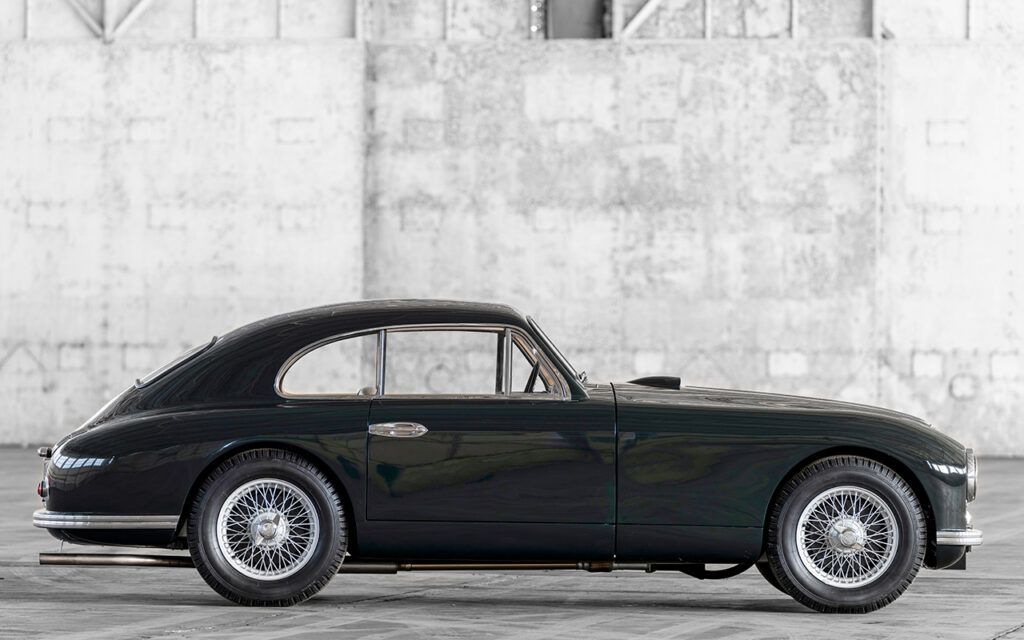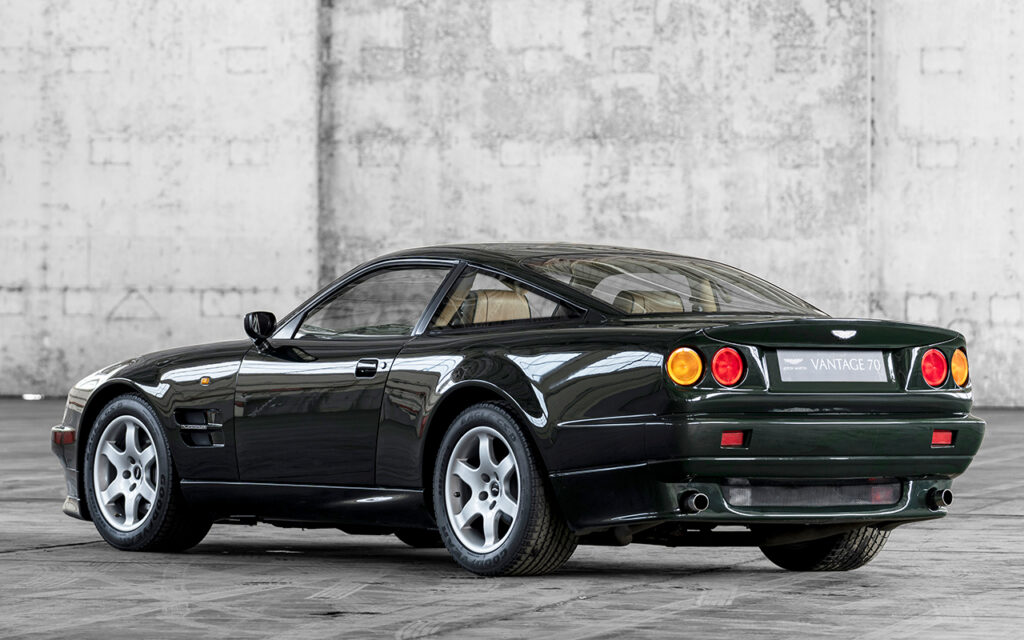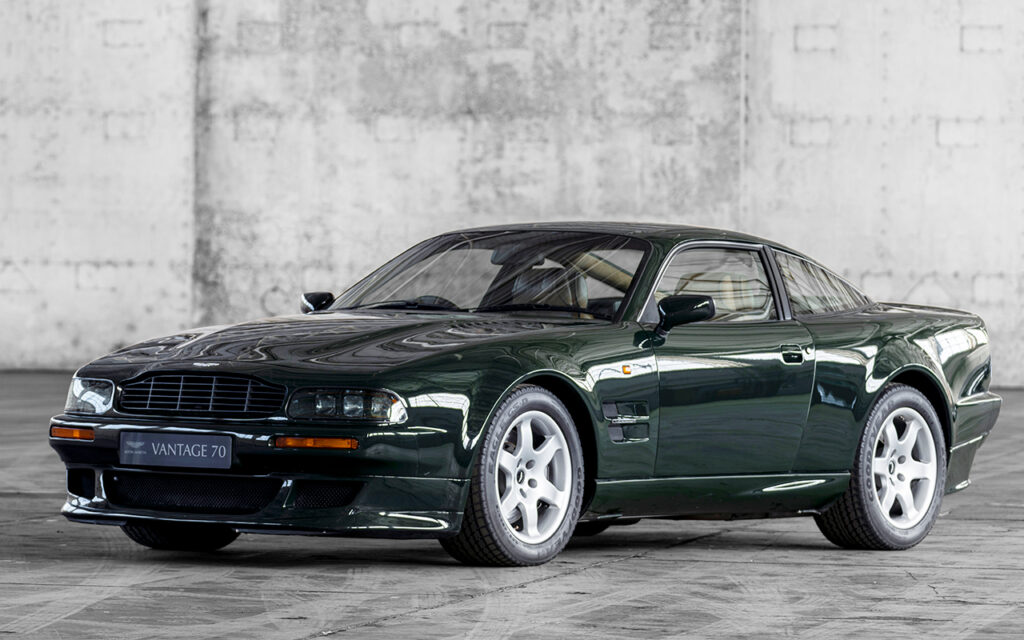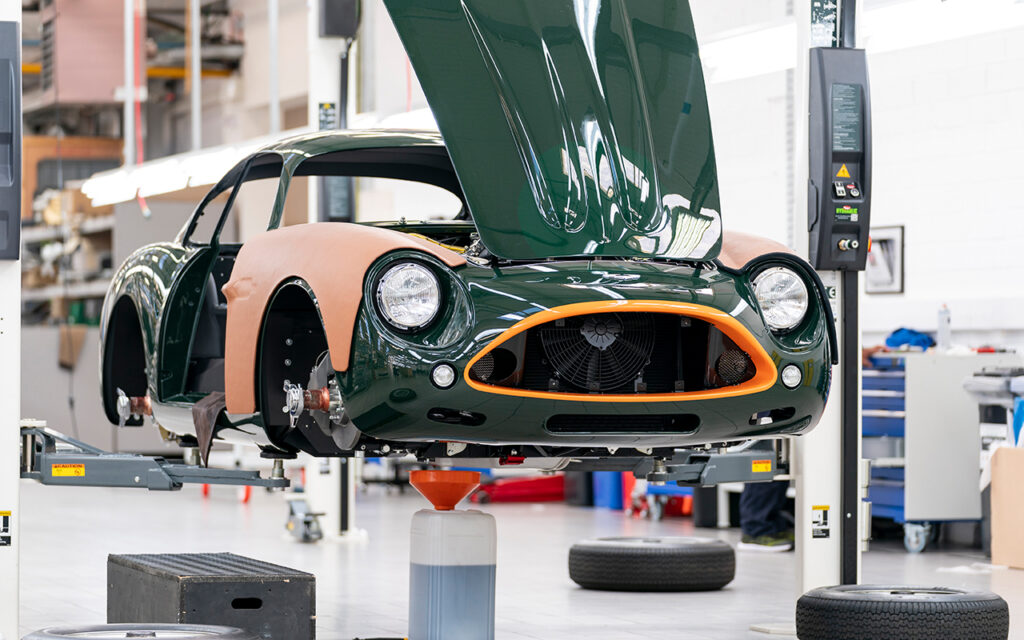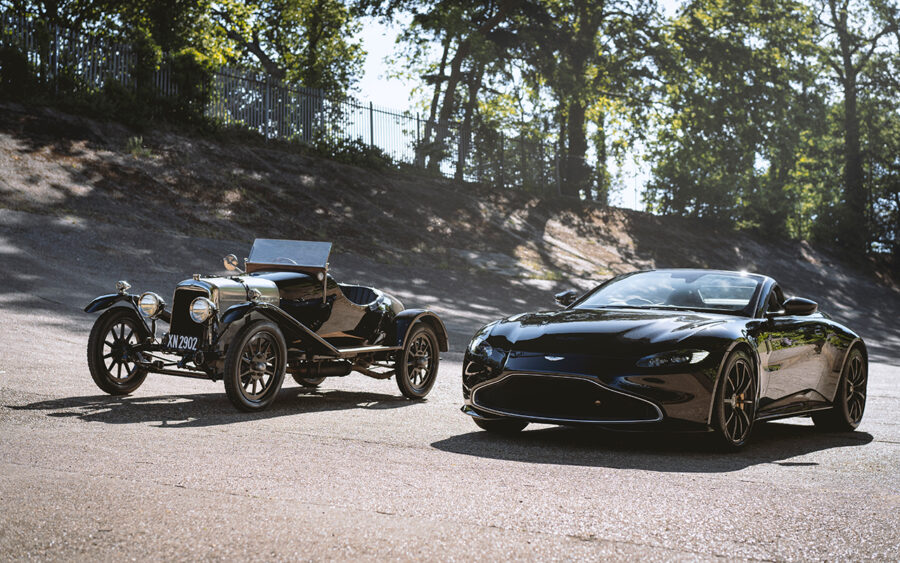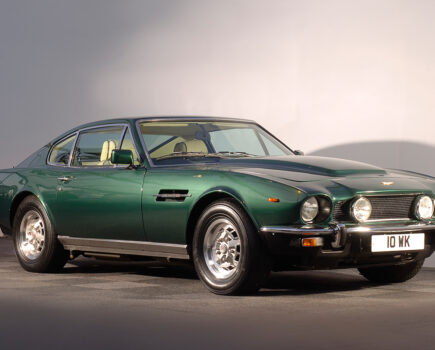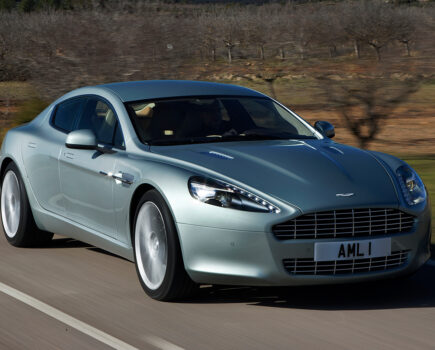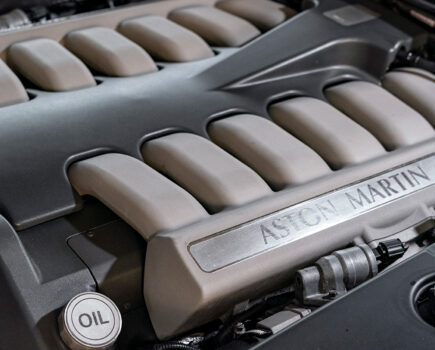A cornerstone of the British car industry, Aston Martin made its name in racing before cementing its place as a master of luxury sports cars
Words: Sam Skelton
Founded in 1913 by Robert Bamford and Lionel Martin, the company of Bamford and Martin acted effectively as a predecessor to the Aston Martin we know today. The duo had joined forces to sell Singers in Callow Street, London, as well as offering servicing for GWK and Calthorpe cars. Lionel Martin raced at Aston Hill, near Aston Clinton, and the pair decided to make their own specials for competition use. The first car to bear the Aston Martin name – the Coal Scuttle of 1915 – was created by fitting a Coventry-Simplex engine to a 1908 Isotta-Fraschini chassis.
World War I impeded series production, with Martin joining the Admiralty and Bamford the Army Service Corps, but after the war production could begin at new premises in Abingdon Road, Kensington. Bamford would leave the company in 1920, before series production could commence.
With funding from Count Louis Zborowski, Bamford and Martin was able to begin semi series production of its Standard Sports model from 1921. The following year, it produced cars for the French Grand Prix, which – at Brooklands – would set speed and endurance records.
Bamford and Martin produced long chassis and short chassis Aston Martin cars in limited, numbers, before bankruptcy interrupted proceedings in 1925. The remnants of the company were bought by a consortium including A. C. Bertelli and Bill Renwick as directors, and the resultant company was incorporated as Aston Martin Motors Ltd. Renwick and Bertelli were established partners, and had developed their own four cylinder engine which they had tested in an Enfield-Allday chassis. This sole Renwick and Bertelli car survives. While they had planned to sell the engine to manufacturers, they soon realised that by buying the remnants of Aston Martin from Lionel Martin they could produce complete cars under an established sporting brand.
They moved the company to the former Whitehead Aircraft works at Feltham, and with Bertelli as technical director launched a number of models key to the development of the Aston Martin brand. These included the 1.5 litre T-type, the International, the MkII and the two-litre 15/98 model. Most were two seaters bodied by Bertelli’s coachbuilder brother Enrico, though some long chassis models were bodied as tourers and saloons.
Bertelli would steer the company through numerous financial backers, racing Aston Martins at national and international events including the Le Mans 24 hour race. But from 1936, Aston Martin decided to concentrate on road cars, introducing a new Two Litre model the following year. Soon after, Bertelli left Aston Martin – with his passion for sporting models, the more mainstream Two Litre was a departure from his way of thinking. Some 700 Two Litres would be built prior to World War II, during which the company would produce aircraft components.
1940s
The car which would shape the direction of Aston Martin cars for the next twenty years was technically constructed in 1939, though its testing would continue throughout the war and the findings would be incorporated into post war models. The Atom was designed by Claude Hill, and utilised a spaceframe constructed of rectangular tubes over which its aluminium panels were fitted. It may have been styled in a manner wholly different to Astons before or since, but the body reflects the lack of materials available during the war and was created with economy.
Initially fitted with a 1950cc engine taken from the 15/98, by the end of the war a new Claude Hill-designed pushrod 1970cc four was fitted alongside a four-speed Cotal semi-automatic gearbox with twin electromagnetic clutches. Over 100,000 development miles were achieved during the war, and the Atom would form the basis of a profitable new line for the company. The snag was, Aston Martin – while briefly profitable – didn’t have the sort of money needed to develop the new model, so owner Gordon Sutherland advertised the company in The Times in 1946. David Brown, manufacturer of tractors, showed interest, and following a test of the Atom would purchase the company.
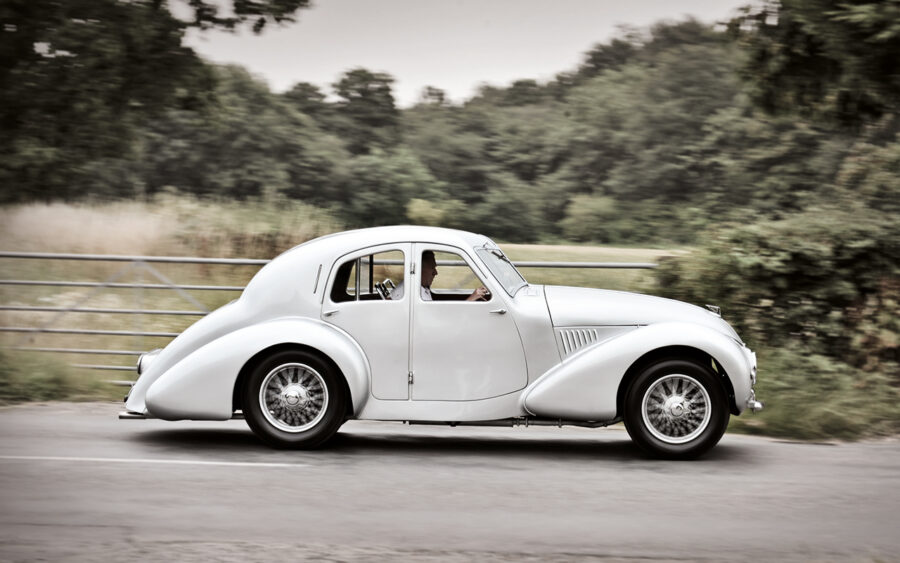
The first model to benefit from David Brown’s money was the Two Litre Sports of 1948. Based on a chassis similar to that of the Atom and with the same 1970cc engine, just fourteen were built before production ceased in 1950. Thirteen featured open two seat bodies, while one was sold as a chassis to be bodied externally. Following the introduction of the subsequent DB2, this car became known as the DB1.
1950s
In 1947, David Brown had bought Lagonda, and merged its interests with those of Aston Martin. Lagonda was producing the 2.6 litre, a large six cylinder tourer developed by W. O. Bentley and using a Bentley-designed six cylinder engine. Brown felt that this engine would also suit a sports model, and in 1950 Aston Martin would introduce the DB2 fitted with this unit in a handsome, two seat closed body. It was a development of Aston Martin’s 1949 Le Mans entrant, and based around a shortened form of the Two Litre Sport’s chassis with a body designed by Lagonda’s Frank Feeley. A drophead coupe was also available, as was a Vantage pack which increased power from 105 to 125bhp.
From this point, Aston Martin’s road and track cars would develop in different directions, with the DB3 of 1951 and lighter DB3S of 1953 not having road car equivalents.
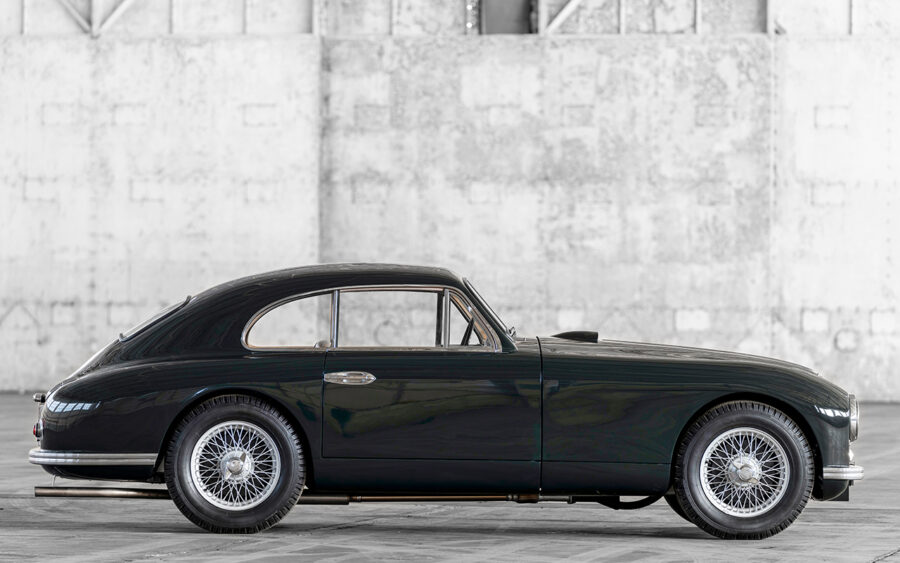
In 1953 the DB2 was replaced with the DB2/4 model, which incorporated changes including a wraparound screen, larger bumpers and repositioned headlamps. The engine used was initially that seen in the DB2 Vantage, though from September 1953 it was replaced by a new 2.9 litre variant of the same unit offering 140bhp. The new model was styled by John Turner, and offered a longer rear portion incorporating a pair of additional seats suitable for short journeys or for children. There was also an opening tailgate in the hatchback manner, for increased practicality.
The MkII of 1955 would offer an optional 165bhp big valve engine, and coachbuilding would be moved from Mulliner of Feltham to Tickford of Newport Pagnell – a company David Brown had purchased the year before. Once again there would be a convertible, and late in production Tickford would body a few cars with a two door notchback coupe body.
The DB MkIII of 1957 – not the DB2/4 MkIII – would build upon this further, with a new radiator grille which would set the tone for all Aston Martin models since. Disc brakes and overdrive would become available during DB MkIII production, as would an automatic option.
Meanwhile, back on the racing circuit the DB3S had been replaced by the DBR1 – a model which would earn Aston Martin victory at Le Mans for 1959.
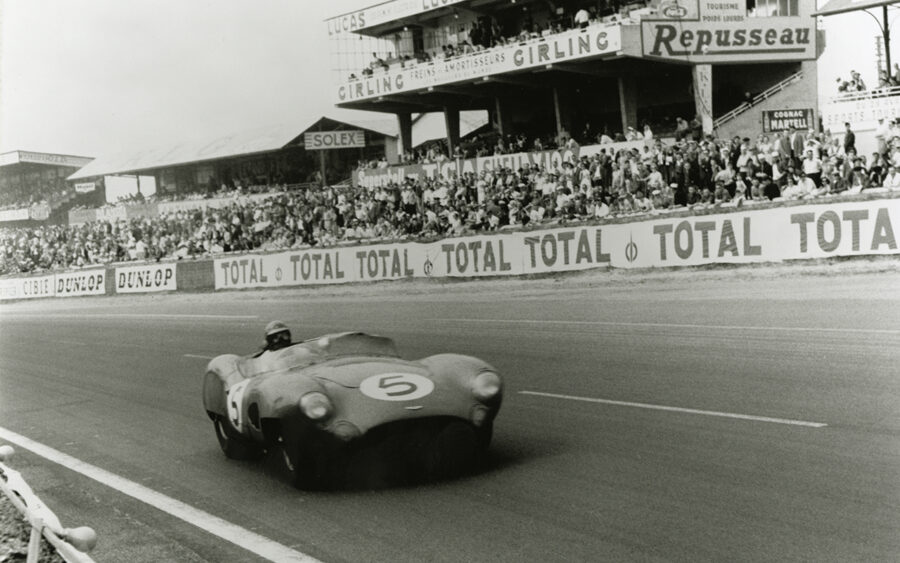
Aston Martin’s road cars would be revolutionised in 1958 with the launch of the Touring-designed DB4 model – which used a new chassis, a new tubular spaceframe construction method, and a new 3.7 litre six cylinder engine designed by Tadek Marek, It would be the first Aston Martin to be built at the Tickford factory in Newport Pagnell, and would form the basis of the subsequent DB5 and DB6 models.
The DB4 would evolve throughout production, gaining window frames for Series 2, new rear lights for Series 3, a new grille for Series 4 and a longer, wider body for Series 5. There would also be a GT model, shorter by five inches, fitted with twin spark plugs, twin distributors, triple Webers, and a lighter shell. Seventy five GTs were produced, while a further 19 would be bodied between 1960 and 1963 by Zagato and sold as the DB4 GT Zagato.
1960s
The first new model of the 1960s bore Lagonda badging, a brand which had been dormant since 1958. The Lagonda Rapide belongs here, however, as it was a development of the DB4. It used a larger 4.0 engine for added power and torque, firstly as most were automatic and secondly to accommodate the greater weight of its four door body. It used De Dion tube rear suspension which would subsequently find a home on the DBS, and at £4950 cost buyers the same as a DB4 and a Ford Zephyr, very nearly as much as a Mercedes 300 – or enough to buy a Facel Vega HK500 with change. Just 55 were built, in part owing to its high price and in part owing to its controversial styling which reminded many of the infamous American Edsel project.
The DB5 of 1963 is arguably Aston Martin’s most famous product, owing in no small part to its association with Britain’s most famous secret agent. Triple SUs were fitted to the Lagonda-spec 4.0 engine in order to produce 282bhp, and this was hooked up to a new ZF five speed gearbox in all but the first handful of cars. One year later, triple Webers and revised camshaft profiles would give the DB5 Vantage 325bhp. Alongside the saloon and convertible, Aston Martin would produce a single DB5 Shooting Brake for David Brown, while Harold Radford would convert a further 11.
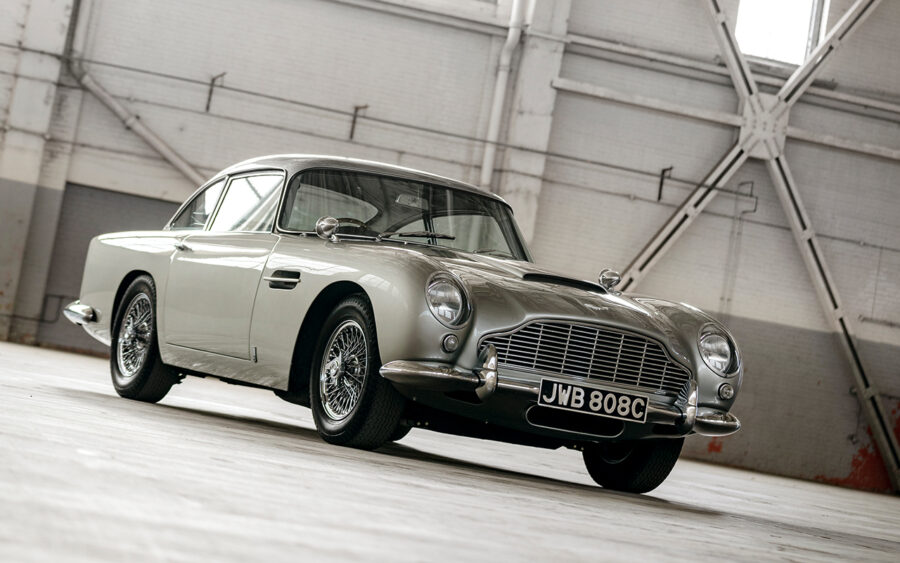
In 1965 Aston Martin would replace the DB5 with the DB6 – elongated to provide four full seats and redesigned with a new Kamm tail incorporating Triumph rear lights, the DB6 was developed with a focus on aerodynamics and the intention of reducing lift at the rear. A convertible was introduced in 1966, this succeeding the 1965 Short Chassis Volante models produced to use up the last of the DB5-specification chassis. The name is almost a misnomer; they are the same length as a DB5, short only in comparison with the DB6 with which they were concurrent.
While DB6 production would continue to 1970, its replacement, the DBS, was launched in 1967. This car featured all new, larger bodywork by William Towns, intended not only to maximise on the car’s four seat potential but also to house the new V8 engine under development, which would not fit into the DB6 shell. Launched with the six cylinder engine, the DBS V8 would follow for 1969. Interestingly, both the DBSes used prominently on screen were six cylinder cars with V8 dubbing, both in On Her Majesty’s Secret Service and in ITC series The Persuaders. The latter incorporated V8 styling touches.
1970s
The first new Aston Martins of the 1970s were little more than facelifts of the existing DBS based range. In 1972 David Brown paid off all Aston Martin’s debts, and sold the company to an investment bank consortium based in Birmingham called Company Developments. Company Developments introduced two new models – the DBS six cylinder was replaced by the Vantage, while the DBS V8 was replaced by the V8 saloon. Both models were heavily based upon their predecessors, though with new noses featuring single headlamps and a central grille rather than one enveloping the previous four lamps.
Large grand tourers were profligate in a recession, and few were sold at first. This combined with a lack of funds to develop an emissions-friendly version of the V8 for California and the subsequent cessation of US sales meant that Aston Martin’s figures were soon in the red again, and a request in 1974 for £500000 in state aid was rejected. A subsequent offer was made following private investment and the agreement of employees to forego a payrise, but its conditions were deemed unacceptable and at the end of 1974 Aston Martin was once again placed into the hands of the receivers. Just prior to this Aston Martin had launched a new Lagonda, a four door variant of the V8 saloon which had been designed in 1969, but just seven cars were sold before production ceased. An eighth body and chassis were assembled in 1974 but not completed until 2008.
In March 1975 the company was sold by the receiver as a going concern to a consortium led by American Peter Sprague, Canadian George Minden and Brit Jeremy Turner. Investors Alan Curtis and George Flather were brought in, and by September 1975 the company reopened as Aston Martin Lagonda Ltd. New models followed thick and fast, beginning with the Lagonda Series 2 of 1976. Deliveries didn’t commence until 1979 owing to development issues, but even then it was the most technically audacious saloon car on sale, with LCD displays and touch button controls wrapped up inside a wedge-shaped body by William Towns. Towns would continue the wedge theme with the 1980 Bulldog concept car.
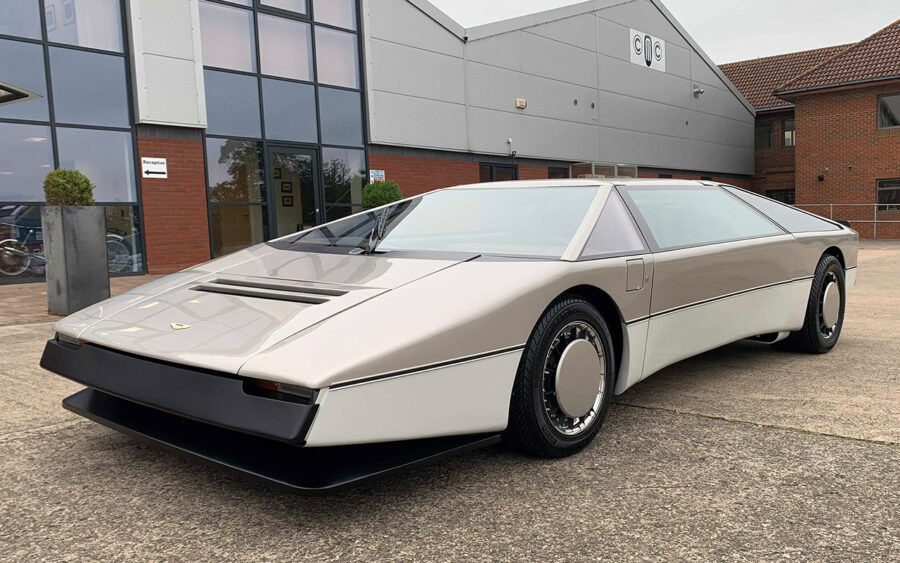
Away from concepts, the new owners broadened the existing Aston Martin range. The V8 Vantage of 1977 was a return to the Vantage name’s performance roots, using a 375bhp variant of the V8. The project came about courtesy of the Lagonda – modified inlets on the Lagonda to clear the low nose robbed power and torque, so Aston Martin developed new cylinder heads with bigger valves to compensate. Fitted with high lift cams, better carburetion and hotter plugs, these revised heads meant that in the V8 saloon, more power could be had. With a blanked off grille, deep spoiler and other cosmetic changes, the V8 Vantage bridges the gap between grand tourer and supercar.
The V8 Volante was a different proposition. Following in the footsteps of converters such as Paul Banham, Aston Martin re-engineered the V8 saloon into a convertible, bringing back the Volante name for the first time since DB6 production had ceased in 1971. The Volante was launched in 1978. The 1978 Birmingham Motor Show also heralded the arrival of a facelift for the V8 series – the Series 4. Offered from October 1978, the October Introduction notes on factory paperwork led to the informal nickname of the Oscar India. These cars incorporated a small spoiler to the boot lid and enclosed the bonnet vent to create a power bulge. There was also a revised interior with extensive use of walnut trim. By now, most standard Astons were automatics, with the majority of manuals being to Vantage spec.
1980s
As the 1970s became the 1980s, Aston Martin was in relatively rude health. Plans pushed forward for Aston Martin to buy MG had been ultimately unsuccessful, and while Aston’s owners were confident in the company, they had only ever intended to buy it to put it back on its feet. Victor Gauntlett of Pace Petroleum had bought a 10% stake alongside Tim Hearley of CH Industrials, and in 1981 both expanded their shares to 50% with Gauntlett assuming control.
Under Gauntlett, Aston expanded the business of its in-house coachbuilder TIckford as a means of generating capital. Tickford’s products included a luxury variant of the Austin Metro, and the Tickford Capri – a Ford Capri with turbochargers and an Aston Martin Vantage style body kit. Gauntlett sold his shareholding in 1983 to shipping magnate Peter Livanos, subsequently to reinvest in a 25% share of the company the following year.
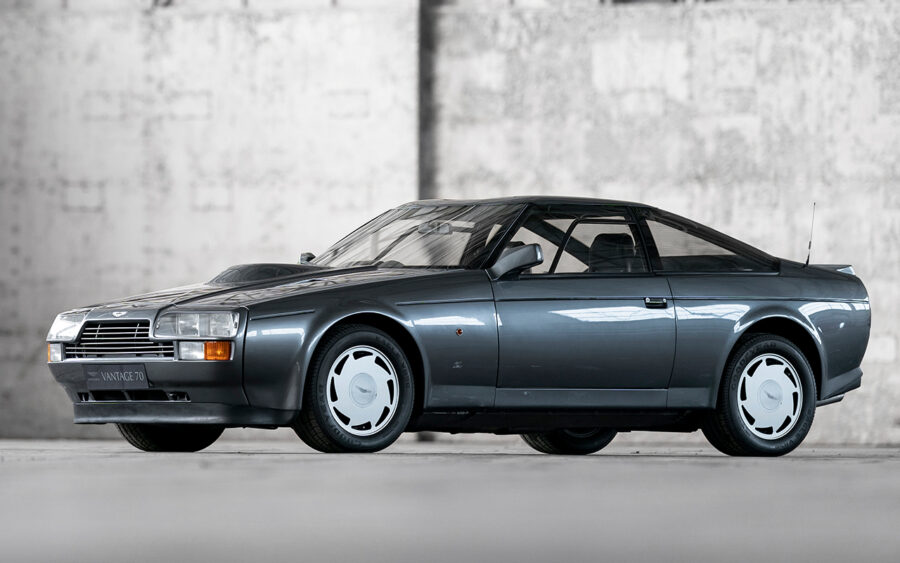
In 1986 Gauntlett negotiated the return of Aston Martins to James Bond, lending his personal V8 Vantage Volante to MGM for filming and selling Cubby Broccoli a Volante of his own for use in America. It is reported that he turned down the opportunity to appear as a KGB colonel in The Living Daylights. Gauntlett also launched two new models, the V8 Vantage Zagato and V8 Volante Zagato, with up to date bodies atop the existing mechanicals. 52 Vantage Zagatos and 37 Volante Zagatos were built.
The following year Ford bought a 75% interest in Aston Martin, intended to inject the company with the funds it so badly needed to develop new models. Subsequently it would buy the remaining 25% in 1990. The first of these new models to see the light of day was the Virage, largely developed under Gauntlett and introduced in 1989. Effectively an update of the V8 saloon concept utilising new styling, new componentry and an uprated engine, this was to form the basis of the marque’s model range into the 2000s.
1990s
Walter Hayes took over as managing director in 1991, following Victor Gauntlett’s departure. He had agreed to remain as managing director for two years following the Ford takeover. From 1992 AML Customer Service Division would offer upgrades to 6.3 litres, with work carried out to suspension, brakes and other componentry to ensure the car could handle the power.
Power was up from 330bhp to 465bhp as a result, but if this was impressive, the 1993 Vantage V550 was another step entirely. Almost all of the body was new, with just the roof and doors remaining of the Virage shell. Courtesy of two superchargers peak power was 550bhp, and subsequent models from 1998 onwards would push this nearer to 600bhp. By then, the Virage had been discontinued and the new V8 Coupe of 1996 merged the Vantage style bodywork with the naturally aspirated Volante engine.
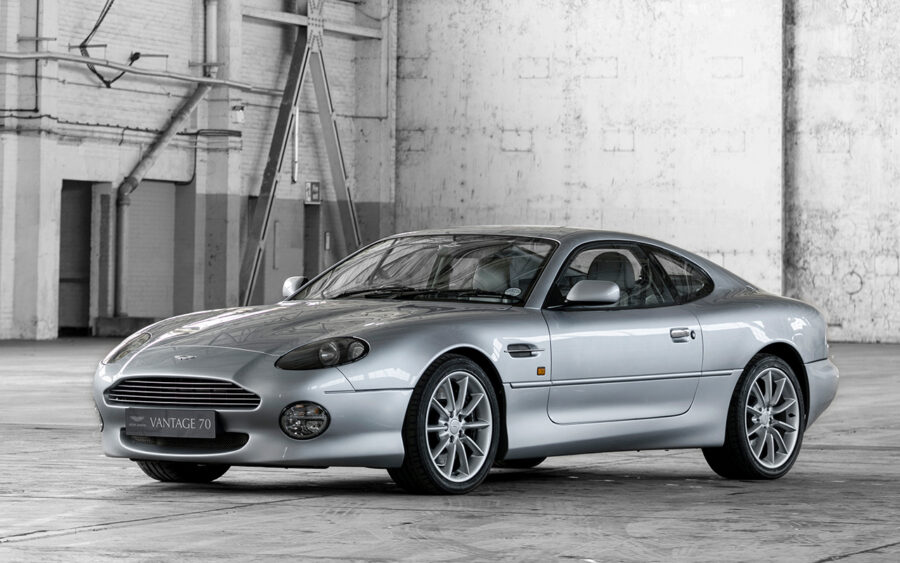
The biggest news of the 1990s though was the reintroduction of the DB name on Aston’s new entry level model, the DB7. Making excellent use of the Ford and Jaguar parts bins, the DB7 was an entry level model designed to earn money for Aston Martin and to attract new owners to the marque. There would subsequently be a DB7 Volante convertible alongside special editions, and from 1999 a new V12 engine would be made available for the DB7 Vantage models. The original six cylinder DB7 was discontinued shortly afterwards.
2000s
Emissions legislation meant that the old Aston Martin V8 was effectively outlawed by 2001, and Aston Martin had developed a new range-topping model as a replacement. The Vanquish used a complex aluminium and carbon fibre chassis, with a development of the DB7 Vantage’s V12 and a new body by Ian Callum designed to echo the DB4 GT Zagato. Elements of its architecture would be simplified for the DB9 of 2004, which was developed around a new platform known as the VH architecture. Again, this would use the V12, and a body clearly designed not only as an evolution of the DB7 but also of the Vanquish. 2004 would also see the launch of a performance oriented Vanquish, called the Vanquish S. In 2006, Aston Martin would utilise the VH architecture to expand downwards with the small, more overtly sporting V8 Vantage, using a development of Jaguar’s V8 engine.
In 2007, Prodrive chairman David Richards led a consortium of backers interested in buying Aston Martin from Ford, in a deal worth £475million. Ford would keep a £40million stake in Aston Martin. The same year, the last Vanquish S left Newport Pagnell, with all future models to be produced at a sister site in Gaydon, Warwickshire, which was already producing the DB9 and V8 Vantage.
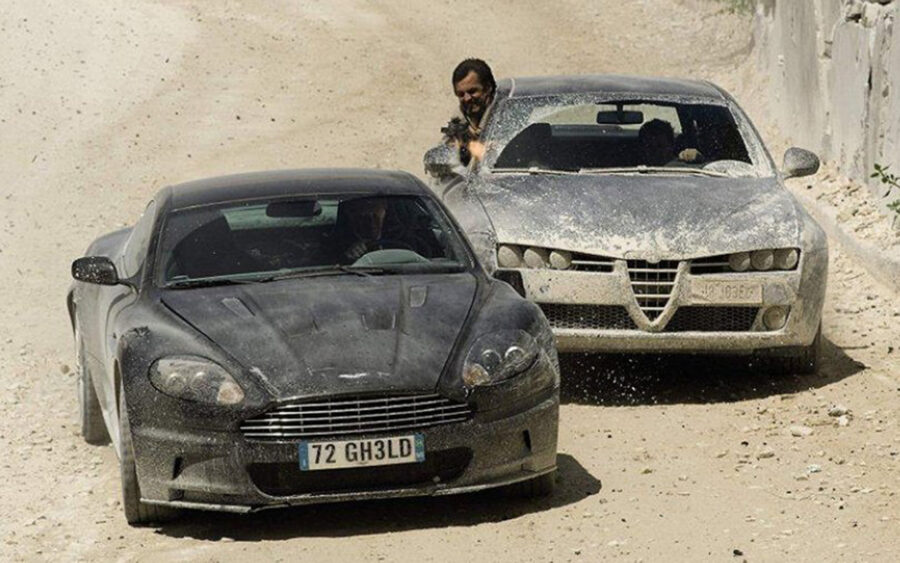
Aston Martin launched the DBS in 2007, as a sports oriented DB9 intended to replace the Vanquish, and the four door DB9-based Aston Martin Rapide in 2010. All models were now based around the VH architecture, and with the introduction of the V12 Vantage in 2009 all models were available with the V12 engine.
2010s and onward
A new Vanquish for 2012 would incorporate VH platform technology, serving as a replacement for the DBS. This was Aston Martin’s second model of the 2010s, following a brief foray into city cars with the Cygnet. This was based upon Toyota’s iQ, and was a means of reducing the brand’s average CO2 emissions based on models. The Cygnet offered no extra performance, but was trimmed in Aston Martin style in a manner similar to the Tickford Metros of the 1980s. It was produced for just two years and is collectible today.
The last hurrah for the VH architecture was the Lagonda Taraf of 2015. Designed to evoke the Lagonda Series 2, initially it was only to be sold in the Middle East. Aston would subsequently expand its market to include Europe, USA, Singapore and South Africa, but just 120 of the £696000 saloons would be built.
A deal signed with Mercedes-Benz in 2013 meant that future Aston Martin models would be supplied with Mercedes-AMG engines and electrical systems – a move intended to support the launch of new models which could generate new sales. Mercedes owned a 5% stake in Aston Martin at the time the deal was concluded, and is looking to increase its holding in stages to 20% in coming years.
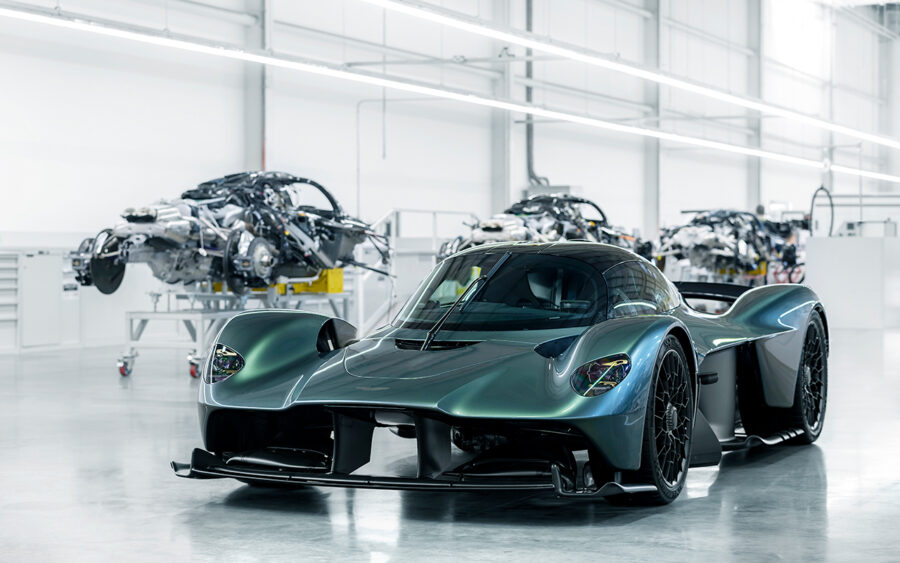
The first Aston Martin to incorporate Mercedes technology was the DB11 of 2016. New models have followed thick and fast – a new Vantage, the DBS Superleggera and the DBX SUV, along with the halo Valkyrie hypercar.
Aston Martin’s Formula 1 fortunes took a turn for the better in the 2023, with star signing Fernando Alonso taking to the podium in the first eight races of the season. On-track success was joined by excitement on the road with the unveiling of the Aston Martin DB12 in May and convertible Volante version in August.
With the range-topping Aston Martin Valhalla on the horizon, the most prestigious of British sports car manufacturers looks set to continue in earnest.
